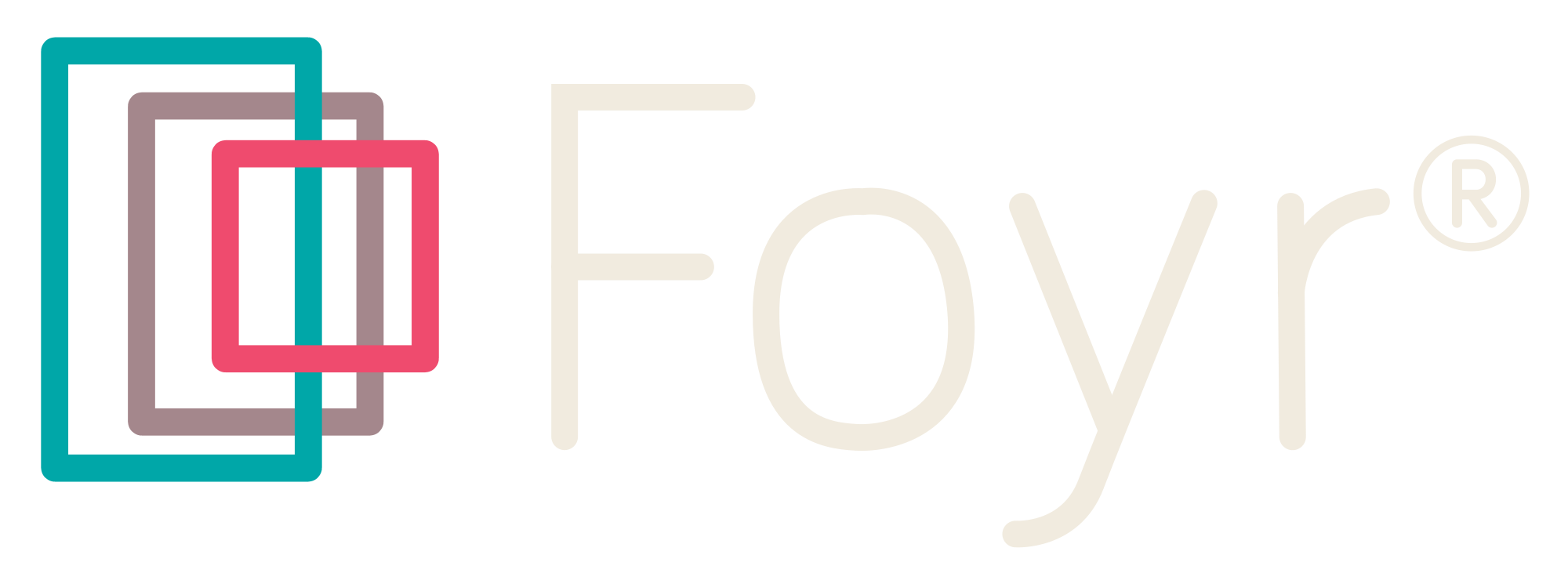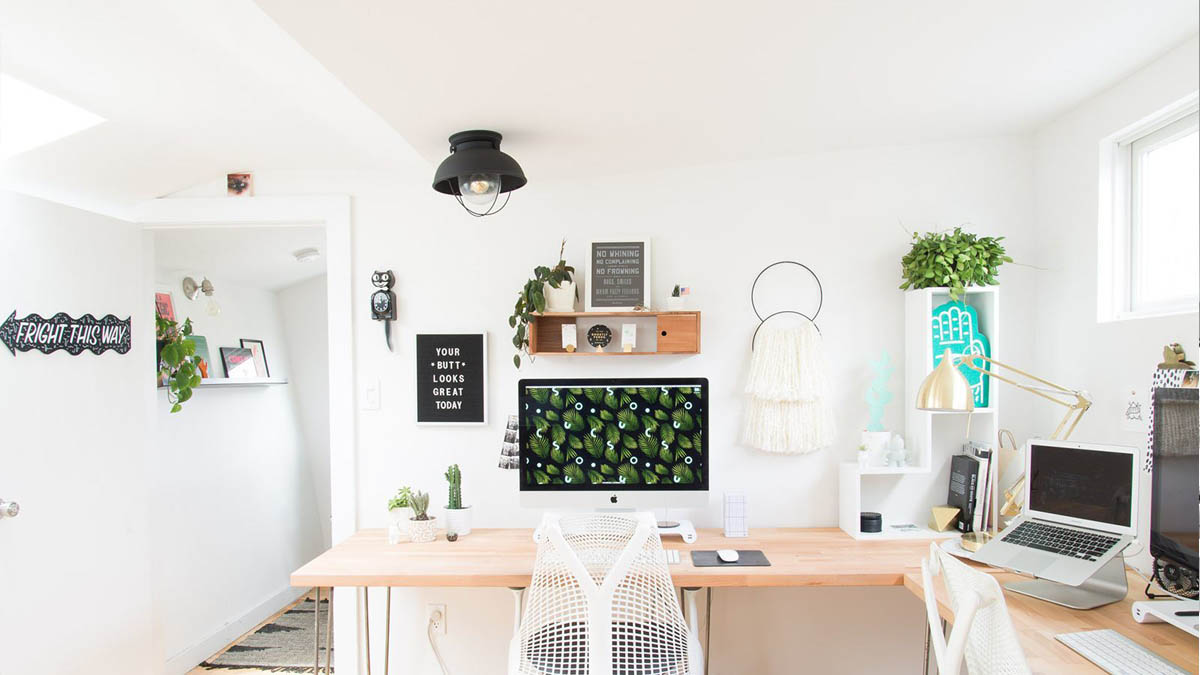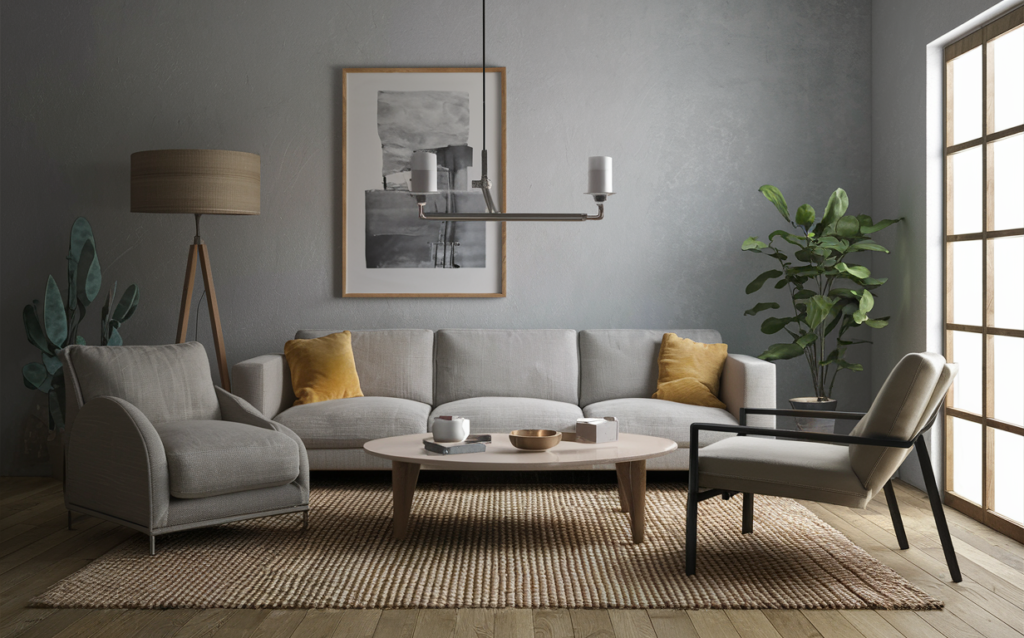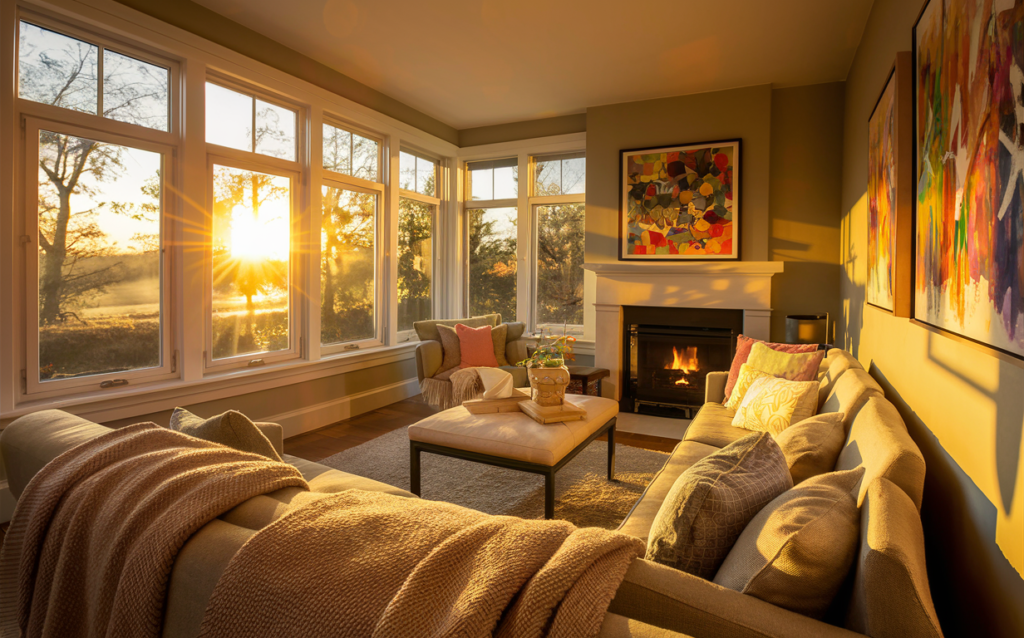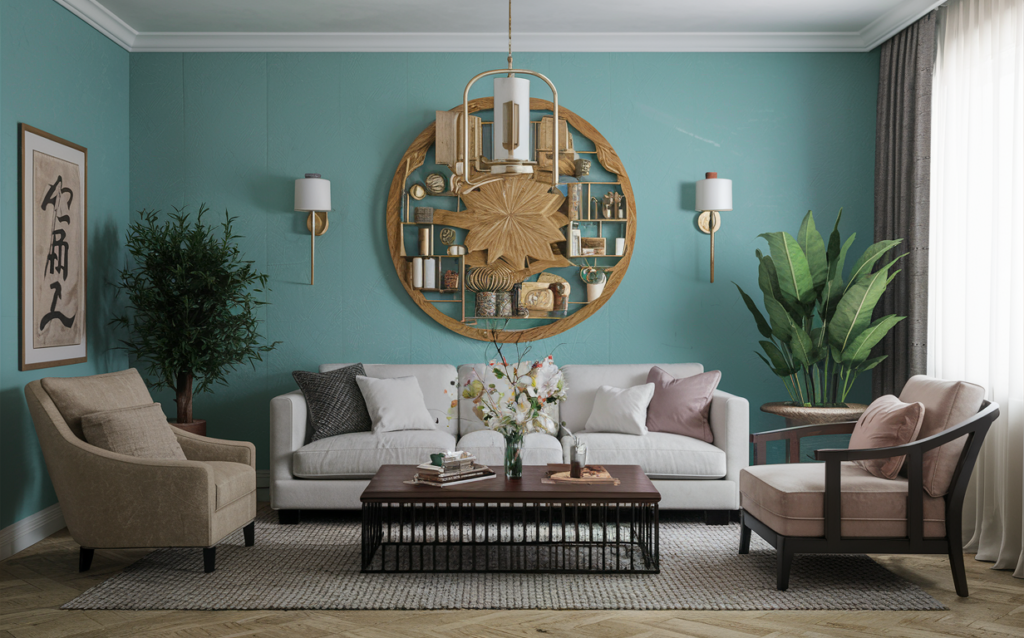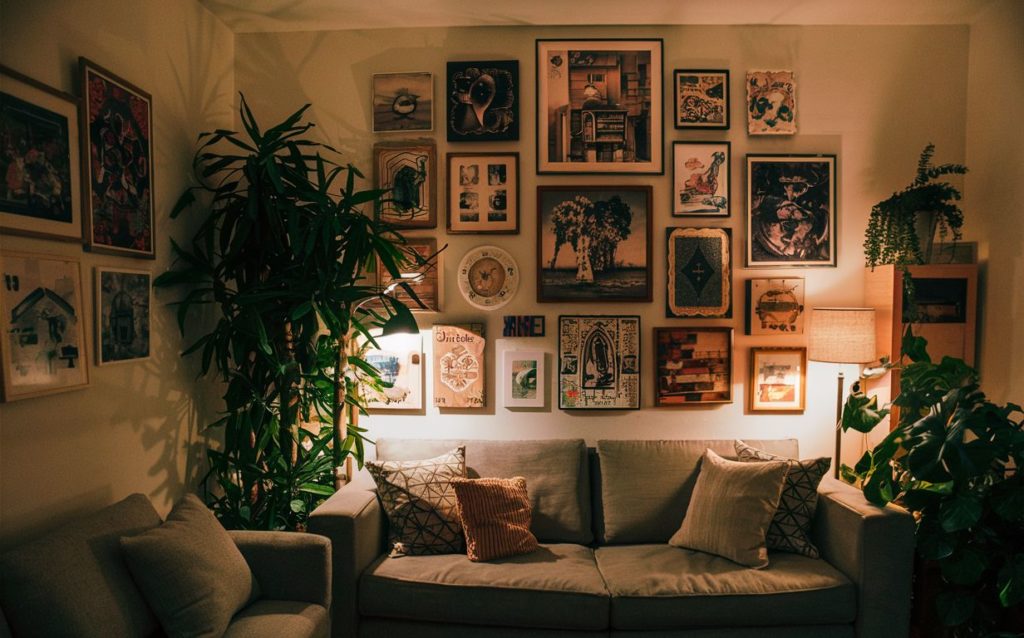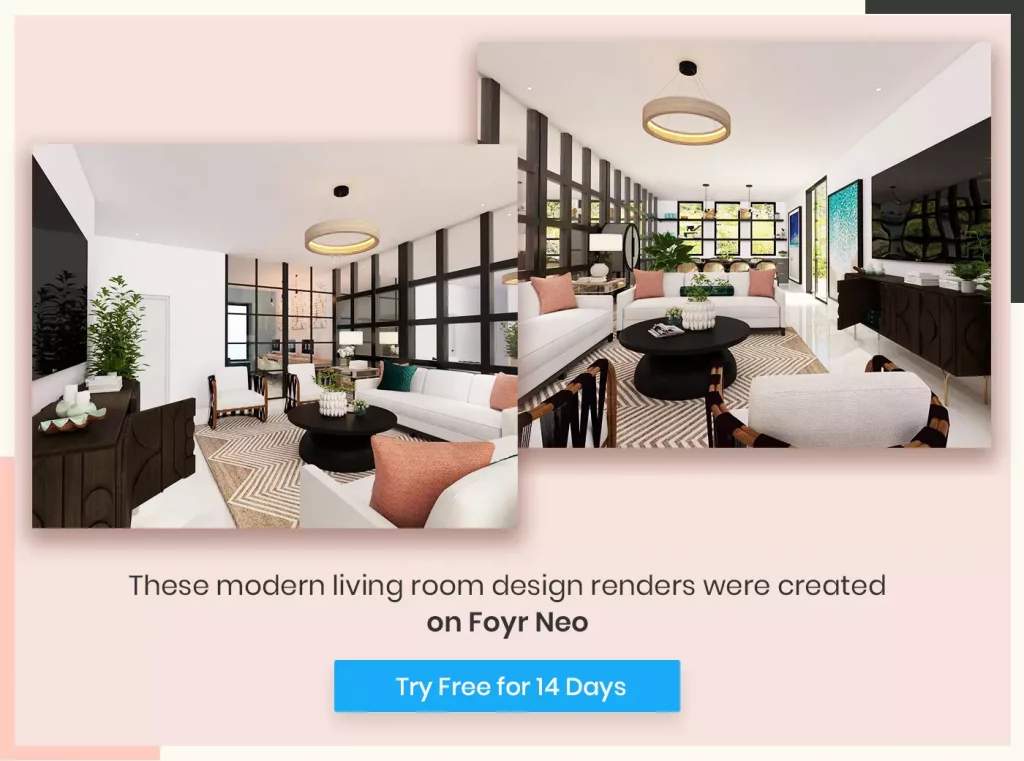Table of Contents
Anyone can relate to the feeling of walking into a doctor’s office with intimidating white tile floors, uncomfortable chairs, and painfully outdated wall art. It’s not just your impending appointment that’s making you feel anxious – it may also be the interior design! On the other hand, you might feel differently about your favorite bookshop, with its warm wood floors, cozy reading chairs, colorful book displays, and floor-to-ceiling windows.
Whether it’s your local cafe, your office, or your home, the psychology of colors in interior design affects us every time we enter a new space, whether we’re aware of it or not. This is part of why the job of interior designers is so vital
Let’s get down to the 5 important ways interior design affects your mood.
1. Color Choice
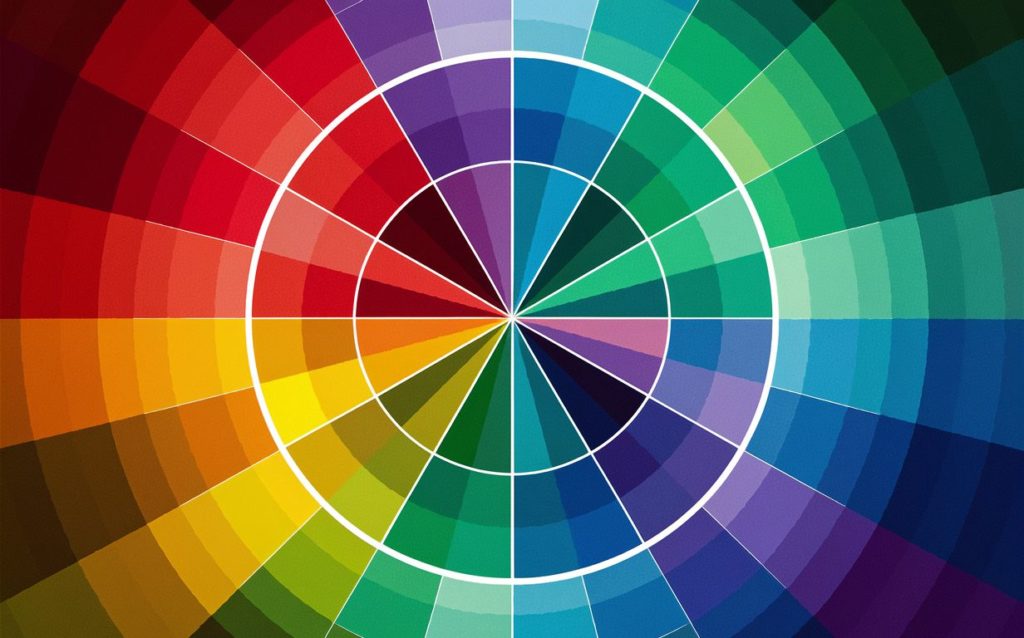
It’s no secret that colors impact our mood – when we’re feeling sad, we even say that we’re feeling blue! The emotional impact of color is well-known in the marketing industry. For example, international fast-food chains like McDonald’s, Burger King, and Wendy’s use red and yellow in their logos and stores, because it’s proven that the combination of red and yellow makes people hungry.
Studies even show that too much red can cause an increase in your heart rate! Here are some of the effects of colors that interior designers generally agree upon:
- Red is associated with energy, power, and love. Too much red can feel intimidating and fiery, bringing about anger; in moderation, the color red can feel warm and inviting. Darker shades like maroon may appear in Tuscan-inspired interiors, while bright, firetruck red may appear in more contemporary styles.
- Orange is associated with creativity and youthfulness. In workplace interior design, an orange accent wall in a conference room might stimulate conversation, while in a gym, orange might help customers stay on the treadmill for another few minutes.
- Yellow is most often associated with sunshine and happiness, so it’s no surprise that the color is thought to generate positivity. Pastel yellows are common in children’s bedrooms, especially in gender-neutral nurseries.
- Green is the color of nature – when you think of spring and summertime, you undoubtedly will think about trees and flowers in bloom. The color green is thought to evoke a sense of stability.
- Blue represents the sky and the sea, helping to summon a more calming ambiance in the psychology of interior design. Darker shades like navy and royal blue are very trendy right now in kitchens and bathrooms – if you’re planning a kitchen renovation, consider using these deep hues for cabinets or a backsplash!
- Purple has regal connotations and can evoke feelings of luxury. At the same time, purple appears often in bohemian style interiors, as it can also connote mystery, creativity, and experimentation. By combining the hues of blue and red, the richness of purple can feel sophisticated and chic.
- White symbolizes purity and brightness. While an all-white interior design was once on-trend, now designers are choosing to accent white rooms with metallics or bold colors. When used in moderation, perhaps in tandem with wood floors, white furniture can make a room feel more open, as it’s light.
- Black may seem like a depressing color choice for an interior, but dark accent walls are more popular than ever. For example, many designers are choosing to paint kitchens black, yet brighten the space up with white cabinetry. In moderation, black can be a surprisingly stylish choice.
- Grey might seem overly corporate or boring, but in bathrooms or kitchens, it can actually be calming. Just make sure you balance it out with other neutral colors to avoid feeling washed out.
- Brown is a natural, neutral color that fits well with other neutrals like green and white. It looks best in wood floors or furniture, but too much brown might feel a bit old.
Read also – How Interior Designers Choose Wall Paint Colors for Interiors
2. Use of Space
Clutter makes us anxious. If you have too much-unused space, it might generate feelings of loneliness.
✅ Even in minimalist interior design styles, minimalism doesn’t necessarily mean emptiness – it means choosing simpler designs, avoiding loud prints, and sticking to a limited color palette.
✅The use of space intersects with its functionality; for example, when decorating a small kitchen, you may opt for hanging storage to organize pots and pans. Creativity is key when making smaller spaces feel bigger. Many designers opt for open floor plans to make space feel more open.
✅If you’re not able to undergo construction, simple tricks like hanging mirrors on the walls can make your room feel larger. You can also make the room feel more open by using lighter colors. If you’re decorating a studio apartment, for example, opt for a white coffee table, rather than black or brown!
| Artem Kropovinsky, founder and principal designer at Arsight says, “For modern design, “less is more”. We strive for understatement by selecting only those pieces that have simple straight lines and minimalist impact on the environment.” |
3. Soothing Lighting
It’s no secret that natural light makes us happy, and darkness can bring us down. When working on new construction, be mindful of placing windows where more light will shine in – remember that in the western hemisphere, the sun rises in the east and sets in the west! For example, if you don’t want to dim the shine of the sun, decorate windows with translucent curtains to prevent blockage.
You also might want to think about where people will spend the most time within the room when placing furniture – for example, if people will likely be sitting on the couch in a living room, place the couch near the window so that the occupants will reap those natural benefits.
If natural light isn’t a possibility, don’t fret – while artificial light isn’t ideal, you still have the capacity to think critically about light fixture placement, as well as the type of light bulbs you use. These choices can make even a windowless room feel a bit more inviting. Warm-hued lighting can be calming, whereas bright LEDs and fluorescent lights can feel alienating and imposing.
Read also – How To Create A Living Room Mood Board Design?
| Artem Kropovinsky, founder and principal designer at Arsight says, “Lighting is the backbone of interior decoration. Through a careful process of blending natural and artificial lighting, we create just the right ambience while enhancing important features.” |
4. Feng Shui
You have probably heard the term Feng Shui Principles used in conversation, but might not be sure exactly what it is, or what it means. Feng Shui is an ancient Chinese philosophy that emphasizes peace and harmony among the elements. Practitioners of Feng Shui believe that the optimal placement of objects or furniture can summon positive energy, resulting in wealth, better relationships, happiness, luck, and more.
When it comes to the psychology of interior design, certain principles of Feng Shui are highly applicable, whether or not you’re an expert on the practice.
Here are some tips and tricks that will bring a bit of traditional harmony into your design practice:
| Aspects of Feng Shui | Details of design |
| Place furniture so that you can see the doorway | For example, in a bedroom, make sure that the bed isn’t placed facing away from the door. While you don’t need to be directly staring at a door, it’s considered good Feng Shui to be able to see where you enter and leave a space. |
| Consider vertical space | By emphasizing the height of a room, you’ll make it feel more expansive and welcoming – at the same time, you can turn this Feng Shui tip into a way to optimize storage space! |
| Minimize clutter | By making a habit of cleaning up your work desk, putting away the dishes, and making the bed, you’ll bring a more positive, peaceful energy to a home. |
| Why not add some plants? | It makes sense that nurturing another living thing in your home is considered good Feng Shui; plants even help cleanse the air, as they give off oxygen and natural scents. |
| Keep the entryway clean and inviting | When you first enter a home, you don’t want to feel cramped in – you want to feel like you have space to enter. |
| Incorporate metallics | While metallic fixtures like rose gold accents or copper cabinet knobs are currently on-trend, according to Feng Shui, metallics have been in style for thousands of years! |
Whether or not the mindset of Feng Shui resonates with you, these long-standing principles of healthy interior design might still help you out in a pinch.
5. Personality
What makes interior design so exciting is that no two projects are alike. The process of decorating a California beach home will be undoubtedly different from designing the conference room of a start-up! When it comes to working with individual clients in their own homes or businesses, keep the personality of your client in mind.
- When a homeowner comes home after a long day of work, they want to feel like their space is their own. Designing for a musician?
- Hang their guitars on the wall for easy storage, access, and style! Renovating the kitchen of an avid home chef?
- Talk to your client about their cooking habits and render their dream kitchen!
| Artem Kropovinsky, founder and principal designer at Arsight says, “Personalizing spaces is essential. The right artwork, for instance, or a little bit of green can turn a plain room into a home as opposed to just another house.” |
The psychology of interior design isn’t one-size-fits-all, because every client is different. While one homeowner might feel comfortable surrounded by quirky contemporary art, another homeowner might prefer a more vintage style. The best way to assess your client’s personalities is to get to know them!
Conclusion
From offices to homes, to restaurants, interior design influences our mood more than we think. In your practice, keep the psychology of interior design at the forefront of your mind when beginning a new project. How do you want your clients to feel when they live in their space?
Not only will interior design influence your client, but also, it can subconsciously affect the perception of guests. By thinking through the subtle effects of color, space, lighting, Feng Shui, and personality, you can leverage the psychology of interior design to benefit both you and your clients. With Foyr Neo, you can experiment with different decor items, furniture and design styles, colors and finishes and find out which style completely resonates with your client. Sign up for Foyr Neo’s 14-day free trial now!
FAQs
Yes, pleasant scents like lavender or citrus can evoke positive emotions and relaxation.
Textures can evoke tactile sensations and add depth to a space, impacting comfort and mood.
Yes, principles such as simplicity, balance, and harmony can foster a serene atmosphere.
Hygge, a Danish concept of coziness and contentment, can inform design choices that prioritize comfort, warmth, and intimacy, positively affecting mood.
Natural ventilation can improve air circulation, regulate temperature, and create a sense of freshness, positively affecting mood and health.







